Prefab Timber Frame Houses: A Comprehensive Guide
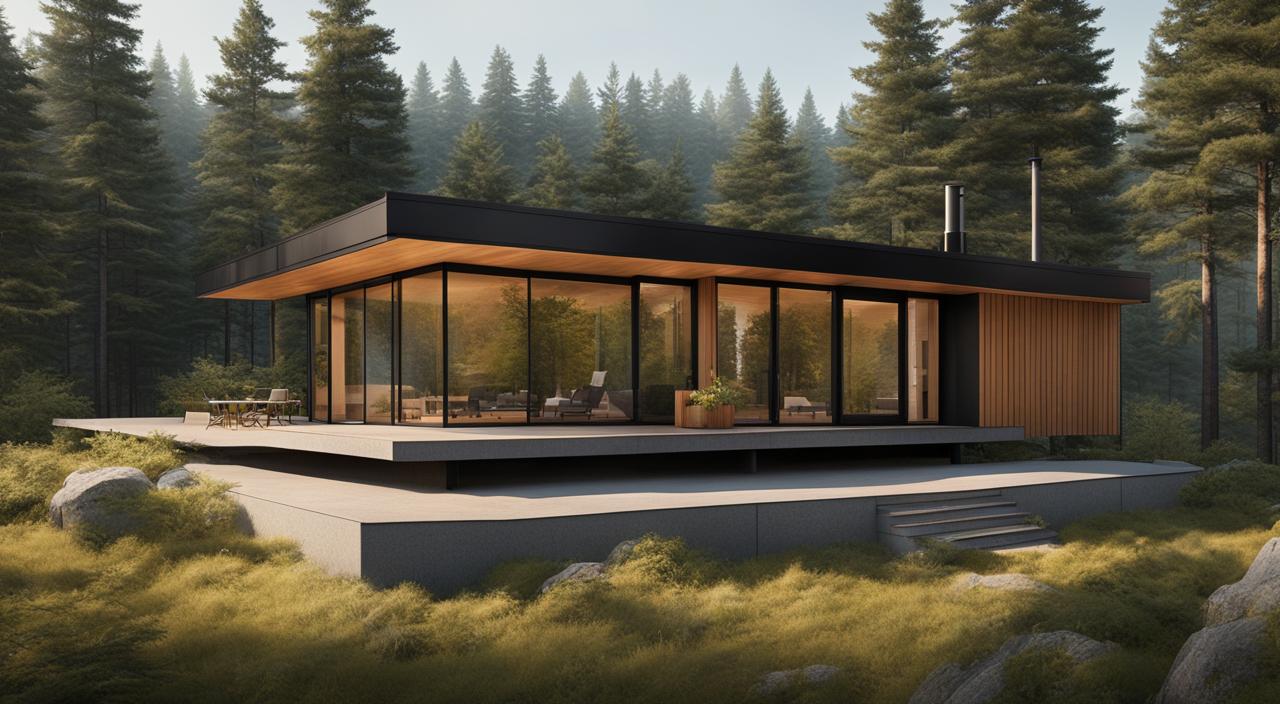
Embracing a harmonious blend of tradition and innovation, prefab timber frame houses stand at the forefront of modern UK housing solutions. This comprehensive guide sheds light on the multifaceted allure of prefabricated timber frame construction, a practised art offering swift build times, exceptional energy performance, and a touch of personalisation for the discerning homeowner. With modern prefab timber frame homes, the dream of constructing a bespoke timber frame home that captures both aesthetic beauty and environmental consciousness is now within reach.
The journey to owning a modular wooden house marries the romance of bespoke architecture with the pragmatism of energy-efficient living. By choosing a prefab timber frame house, you’re not just investing in a structure, but also in a cost-effective, sustainable lifestyle that’s designed to adapt with your evolving needs—a home that reflects both your values and your vigour for life.
Key Takeaways
- Discover the inherent benefits and streamlined process of prefab timber frame construction.
- Unearth the potential for customisation that allows a timber frame home to embody your individual taste.
- Learn how modern prefab timber frame homes meet rigorous energy efficiency and sustainability standards.
- Explore the design flexibility and architectural freedom afforded by modular wooden houses.
- Gain insight into the affordability and long-term cost savings associated with prefabricated timber frame homes.
Understanding the Appeal of Prefab Timber Frame Houses
The ascension of prefab timber frame houses in the United Kingdom’s architectural landscape reflects an alignment with environmental consciousness and a surge in demand for energy-efficient living spaces. A blend of traditional charm and modern innovation, these structures are revolutionising residential construction, as they offer a viable solution to the challenges of the wet British climate and rigorous build phase schedules.
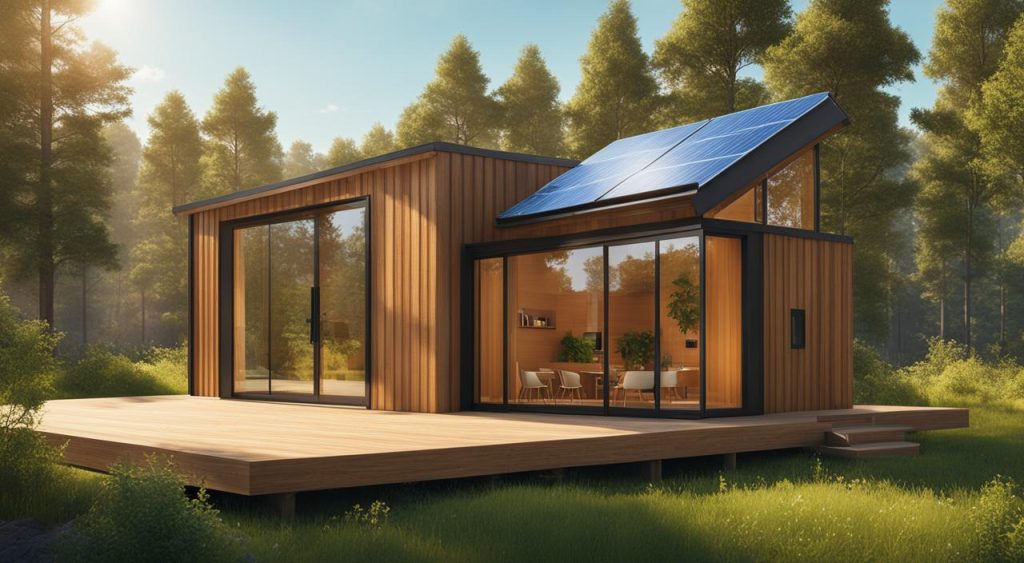
The rising popularity of timber frame construction in the UK
Forecasts predict a substantial growth of 25% in the adoption of timber frame construction by 2022. This projection is evidence of an industry responding dynamically to the demands for sustainable timber houses, particularly suitable for the UK’s wet climate. Not only do these houses offer practical advantages but they also capture the aesthetic pliability treasured by British homeowners, ensuring that each home built is not just a structure but an embodiment of personal style and ecological responsibility.
Benefits of offsite-manufactured structural timber systems
One cannot overlook the practical benefits of offsite-manufactured structural timber systems – a pioneering approach that promises significantly swifter build times than traditional brick and mortar methods. This not only facilitates a quicker move-in timeline but also minimises on-site disruption, an imperative aspect in today’s ever-busy life rhythms. It is an innovative method that grants energy-efficient timber frame houses the potential to achieve greater airtightness and thermal regulation than ever before.
Sustainability and eco-friendliness of timber frame homes
The trajectory towards more eco-friendly prefab houses is becoming ever clearer, with sustainability and environmental stewardship being at the forefront of design and construction. Utilising durable timber from responsibly managed forests ensures that prefab timber frame homes not only stand the test of time – much like Britain’s venerable historical architecture – but also do so with a minimal carbon footprint, fostering a greener future for all.
- Reduced running costs through thermal efficiency
- Design flexibility with various materials and finishes
- Contribution to a greener, more sustainable housing market
As we consider the environmental benefits and the innovative strides in construction technology, it becomes clear that the appeal of a prefab timber frame house goes beyond aesthetic allure, promising a sustainable, cost-effective, and efficient lifestyle for residents across the UK.
The Design Flexibility of Prefabricated Timber Frame Homes
The allure of a modern prefabricated home lies significantly in its aesthetic versatility. With affordable timber frame construction, homeowners revel in the opportunity to craft spaces that reflect their unique personalities and tastes. This fusion of function and fashion manifests in homes that are both structurally sound and visually compelling.
Exterior Finishing Materials for a Unique Aesthetic
To curate an external facade that truly stands out, the choice of materials is paramount. Affordable timber frame construction allows for a wide range of finishing options that, while friendly to the purse, don’t compromise on beauty:
- Render provides a smooth finish, available in various colours, to achieve a clean, modern look.
- Wood cladding brings a touch of natural warmth and can be tailored in hue and pattern to complement the surrounding environment.
- Brick slips give the classic brick appearance with a lightweight, easy-to-install method that also caters to thermal insulation.
Incorporating Multiple Design Styles and Inspirations
Whether one dreams of a home that whispers the understated elegance of Scandinavian design or exudes the comfortable robustness of New England-style houses, prefabricated timber frame homes are the canvas for these visions. Varieties in architectural design that capture these inspirations reflect a harmonious balance between stylish living and wallet-conscious decisions:
- The Scandinavian chic, characterised by minimalist lines, functional layouts and a monochromatic palette, interspersed with bursts of colour.
- New England charm, where traditional forms meet casual comfort, often featuring exterior shiplap walls and gabled roofs.
Thus, the journey to one’s dream dwelling doesn’t necessitate a compromise on either aesthetic appeal or financial viability; the beauty of a modern prefabricated home is its ability to marry the two seamlessly.
The Structural Integrity and Efficiency of Modular Wooden Houses
When it comes to constructing a dwelling that balances durability with eco-conscious design, prefab post and beam homes stand as a testament to contemporary engineering merged with traditional aesthetics. These modular wooden houses are celebrated not only for their visual appeal but also for their exceptional structural integrity and construction efficiency.
In the UK, where efficiency and reliability are paramount, modular wooden houses constructed with prefabricated techniques offer significant advantages over traditional brick-and-mortar buildings. The use of precision-cut and pre-assembled wooden frames means that each component fits perfectly, reducing the chance of human error and ensuring a tight construction timeline can be maintained.
- Prefabrication leads to a rapid and streamlined building process.
- Factory-controlled conditions minimise errors and enhance structural soundness.
- Modular designs can be tailored to meet individual architectural preferences.
The adoption of these innovative building methods allows for homes to be erected with speed, a factor especially useful in climates prone to unpredictable weather. Furthermore, modular wooden houses are inherently robust—engineered to withstand various environmental challenges without compromising on safety or style.
- Speedy assembly on site lessens exposure to adverse weather conditions.
- Pre-cut elements ensure high levels of precision and quality control.
- The inherent strength of the timber frame provides lasting stability.
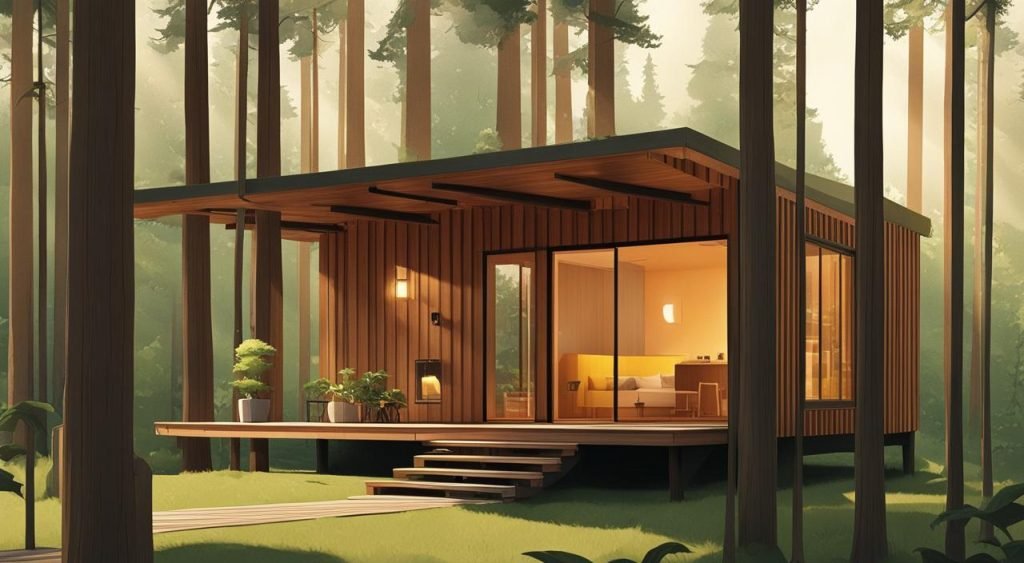
The allure of prefab post and beam homes lies not only in their quick assembly but in their inherent energy efficiency as well. Tightly sealed joints and fixtures prevent thermal leaks, leading to a reduction in heating costs and a boost in the home’s overall environmental friendliness.
In conclusion, it’s the harmonious blend of traditional craftsmanship and modern efficiency that makes these homes particularly appealing in today’s market. As UK buyers grow increasingly aware of the long-term benefits, the popularity of modular wooden houses is undoubtedly set to continue its upward trajectory.
How Prefab Timber Frame House Construction Promotes Energy Efficiency
Delving into the realm of prefab timber frame construction reveals a dedicated pursuit towards energy proficiency. These modern structures are not only aesthetically pleasing but are also at the forefront of energy-saving home design. Homeowners seeking an energy-efficient timber frame house are often drawn to the innovative ways prefab technology maintains a snug, sustainable living environment.
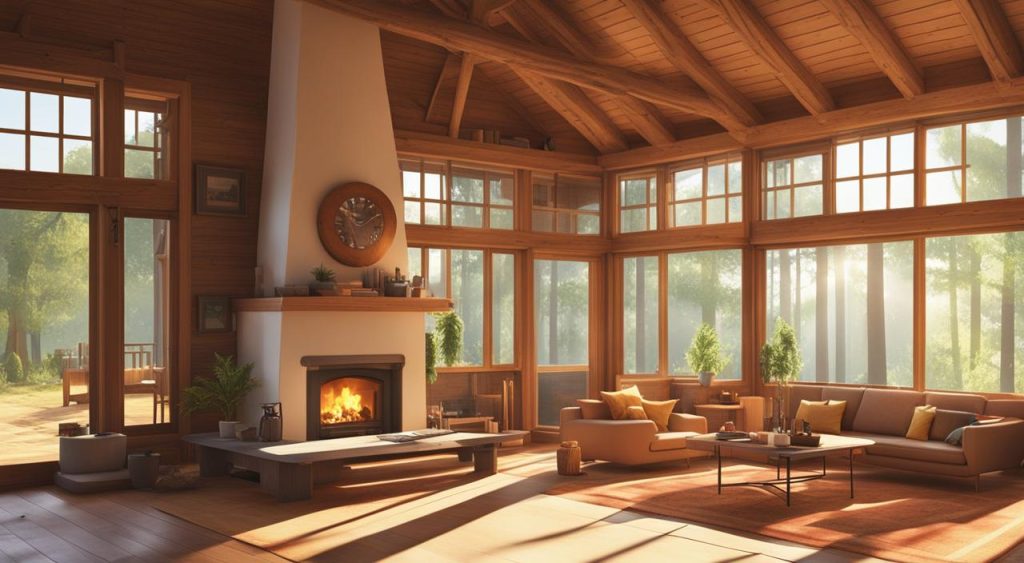
Thermal Efficiency and Insulation in Modern Prefab Homes
The cutting-edge approach of prefab timber frame construction centres around the use of high-grade insulation and materials that are designed to seal the warmth within. Triple-glazed windows alongside robust thermal barriers play a significant role in curbing energy consumption, offering a residential space resolute in its resistance to the brisk UK weather.
- Intensive insulation materials contributing towards a consistent indoor temperature.
- Intricately designed air tightness measures to minimise heat loss.
- Advanced window solutions that curtail unwanted heat exchange.
Meeting Passivhaus Standards with Prefab Timber Construction
Prefabricated homes in the UK, echoing the pioneering spirit of the Passivhaus ethos, exhibit exceptional energy efficiency levels. Harnessing the precision of prefab timber frame construction, these homes often surpass the stringent Passivhaus criteria, becoming a paragon of thermal efficiency and comfort in the residential sector.
- Deployment of intelligent design that harnesses solar gain and minimises thermal bridges.
- Optimisation of energy performance through meticulous planning and execution.
- Provision of a living environment that is both cost-effective and environmentally conscious.
The synergy between energy-efficient timber frame homes and prefab timber frame construction crystallises a vision for housing that is both modern and mindful of the planet. Innovations like the Tech-Vantage system exemplify the strides being made, bringing forth homes crafted not just for today, but for generations to come.
Key Elements of a Sustainable Timber House
Embracing the principles of sustainability, the construction of a sustainable timber house takes into consideration both the origin of its materials and the ensuing environmental impact throughout its lifecycle. Eco-friendly practices in the design and build of these homes ensure that the eco-friendly prefab house not only yields a comfortable living space but also contributes to a greener planet.
Use of responsibly sourced timber and recyclable materials
At the heart of sustainable architecture are materials obtained through ethical and renewable means. Timber used in the construction of eco-friendly prefab houses comes from forests managed sustainably, preserving biodiversity and minimising deforestation. Manufacturers also rely heavily on recyclable materials, such as wood for structural elements and metal for fixtures and fittings, reinforcing the home’s eco-conscious blueprint while promoting a circular economy.
Reducing carbon footprint during and after construction
A pivotal goal in the creation of any sustainable timber house lies in the reduction of its carbon footprint. Prefabrication in controlled factory conditions optimises material utilisation and decreases onsite waste and pollution. Furthermore, the inherent energy efficiency of these homes leads to a reduced carbon footprint over their lifespan, as less energy is required for heating and cooling, proving that an eco-friendly prefab house is a forward-thinking choice in today’s environmentally conscious society.
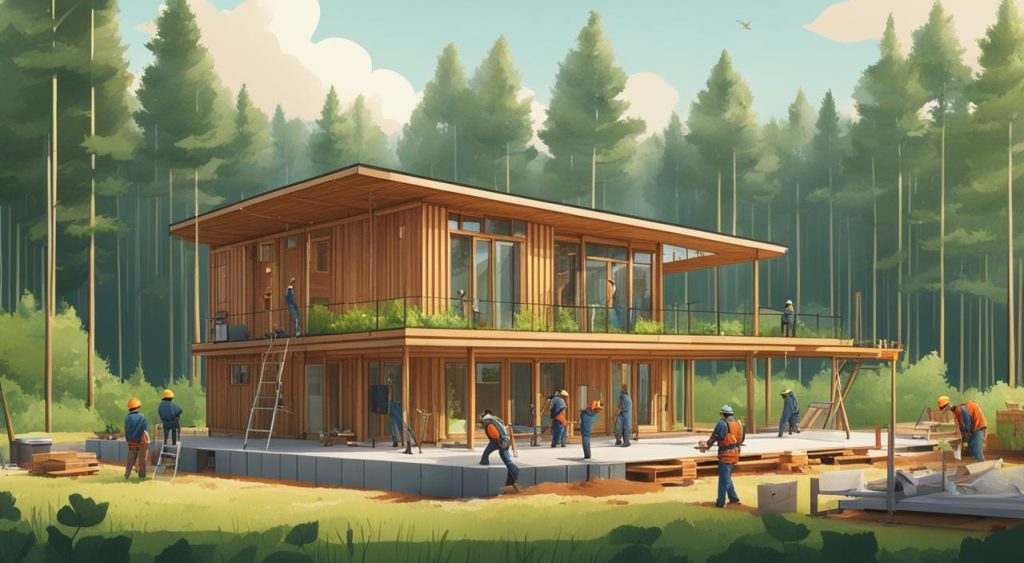
- Responsibly sourced wood from certified forests
- Integration of recyclable components like metal and insulation
- Streamlined production processes that minimise waste
- Designs that lead to reduced energy consumption post-construction
By attending to these fundamental aspects, sustainable timber houses embody the harmony between human habitation and environmental stewardship, paving the way for a more responsible and eco-friendly approach to modern living.
Streamlined Building Process with Quick Assembly Timber Houses
The evolution in construction afforded by the introduction of quick assembly timber houses has revolutionised building practices in the United Kingdom. The prefabricated elements of these homes are meticulously crafted offsite, which translates into a highly efficient onsite assembly process. The outcome is the expeditious erection of prefab timber frame homes, significantly reducing the timeline from foundation to finish.
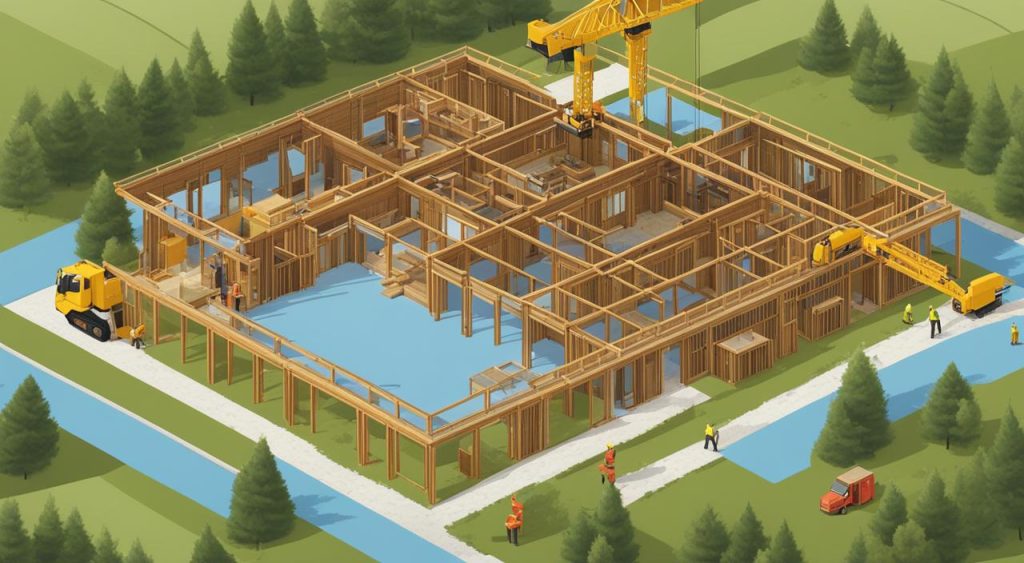
Key factors contributing to the accelerated construction pace include:
- Precisely engineered timber panels and frames arriving ready to install.
- The elimination of weather-dependent masonry drying times.
- Immediate progression to interior trades such as electrical work and plastering.
This method excels in not just velocity but also in delivering a remarkably weatherproof structure within mere days. Such promptness is invaluable, particularly in regions prone to unpredictable weather, ensuring the interior environment remains dry and contractors can continue with their work unabated by external conditions.
Ultimately, the adoption of quick assembly timber house technology underscores a significant leap forward in building efficiency. The harmony of practicality and speed in construction not only accelerates homeownership but also reinforces the UK’s commitment to sustainable and innovative housing solutions.
Modern Prefabricated Homes: Merging Style with Functionality
The evolution of modern prefabricated home design is a testament to the innovative fusion of stylish aesthetics with seamless functionality. In the UK, the appeal of timber frame prefab homes has sky-rocketed, with homeowners appreciating the perfect balance between cutting-edge design and comfortable living spaces.
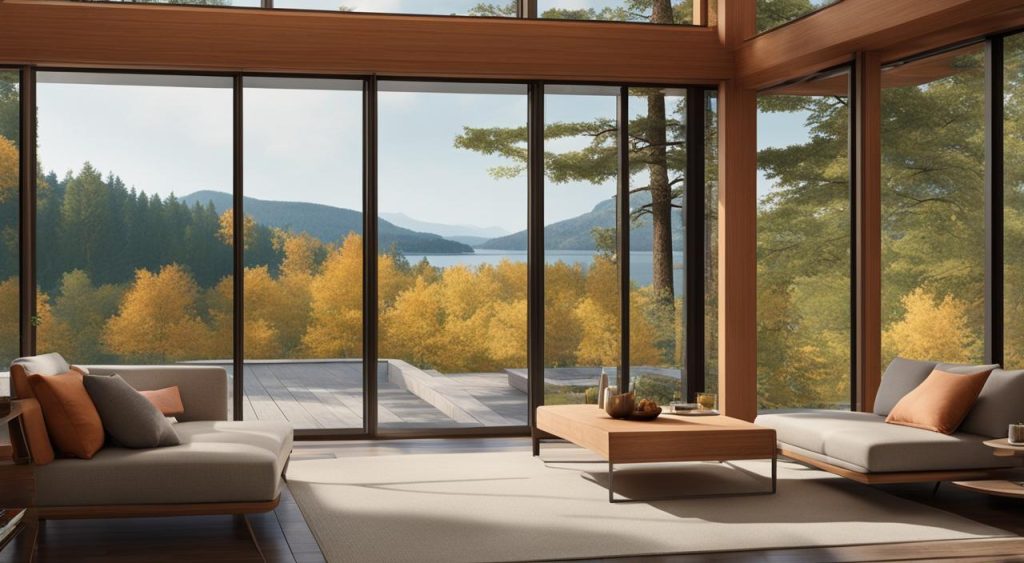
These contemporary abodes are redefining domestic architecture, transcending traditional barriers with creative spatial solutions and minimalist expressions. Let’s delve into the current design trends that underscore this modern way of living and building.
Contemporary Design Trends in Prefab Post and Beam Homes
The architectural tapestry of modern prefabricated homes is textured with diverse elements. Trends in the prefab sector showcase a predilection for open-plan layouts, augmented by the inherent flexibility of post and beam construction. The interplay of natural light and space forms the backbone of these modern habitats, with design features including:
- Striking glazed gables which not only maximise natural light but also offer stunning panoramic views.
- A penchant for minimalist aesthetics, where less is more and every element serves a purpose, reflecting modern sensibilities.
- The use of natural materials like wood and stone, seamlessly connecting the indoor environment with the natural world outside.
- Hybrid spaces that blend indoor and outdoor living, with features such as sliding glass walls and extended decking.
- Smart home technology integration, ensuring that the functionality of the home is as advanced as its design.
The beauty of these trends lies not just in their visual appeal but also in their adaptability. Owners of timber frame prefab homes have the opportunity to personalise their spaces in ways that traditional construction methods might limit. The result is a living experience tailored to the rhythm of contemporary lifestyles, promising both style and substance.
Cost Consideration in Prefab Timber Frame Homes
When venturing into the realm of affordable timber frame construction, financial planning is a decisive factor. Prefab timber frame homes distinguish themselves with economical pricing structures and the promise of clear-cut budgeting, thanks to fixed specifications and regulated production processes.
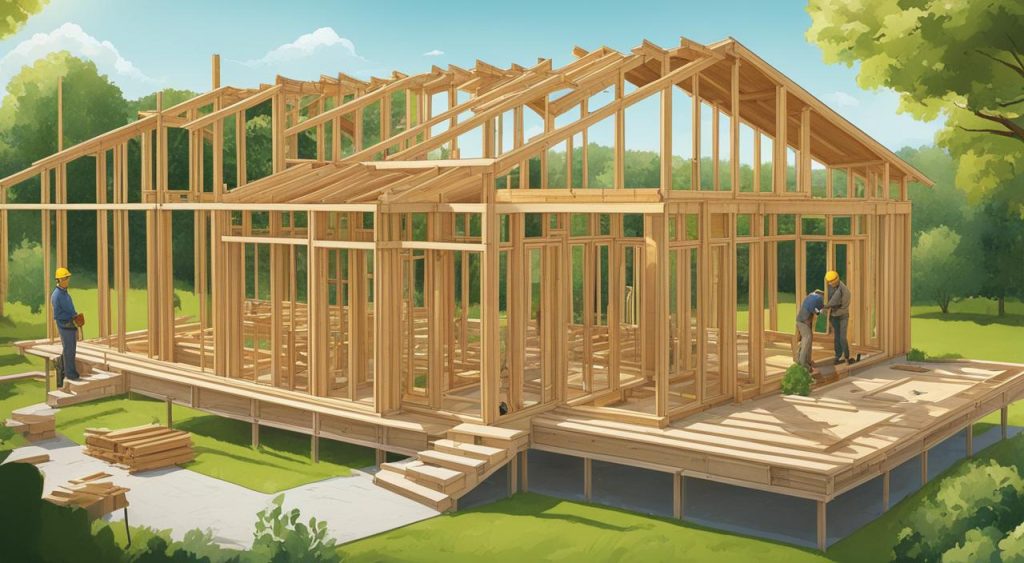
The expenditure on a comprehensive prefab timber frame package, encompassing the base to the rooftop, hinges on the bespoke nature of the design and the specificities of the building site. Prices characteristically align with the scope of economical feasibility, particularly when the long-term advantages of energy efficiency and streamlined construction are accounted for.
- Initial Assessment – Evaluating site specifics and design requirements for an accurate quote.
- Design Customisation – Selecting materials and features within a set budget without compromising on aesthetics.
It’s crucial to acknowledge that affordable timber frame construction does not only signify the immediate costs but also encompasses the ensuing benefits. These homes often lead to notable savings in heating and cooling expenses, which materialise as a fiscal boon over the lifespan of the house. Evidently, investing in a prefab timber frame home becomes an economically sound decision for prospective homeowners.
The Future of Timber Frame Prefab Houses in the Housing Market
The prospect of timber frame prefab houses is evolving, merging traditional homebuilding with emerging market demands. As a greener consciousness takes root amongst consumers, the housing market is reshaping to accommodate the surge in preference for environmentally harmonious dwellings. The result is a burgeoning interest in homes that harmonise luxury with ecology—a trend that timber frame prefab constructions are well-positioned to satisfy.
There is an unmistakable momentum building around these modular homes, driven by their numerous benefits such as reduced construction time, better energy efficiency, and the adaptability for bespoke designs. The housing sector, particularly within the UK, is noticing a pivot towards more sustainable practices, and timber frame prefab houses are emerging as the archetype of modern, eco-friendly living.
Here are a few reasons why this innovative approach to housing is gaining traction:
- The carbon footprint of these houses is substantially lower than that of traditional builds, contributing positively to the fight against climate change.
- Technological advancements allow for precision in design and waste reduction, making the build process cleaner and more efficient.
- They offer an attractive proposition for those seeking energy savings due to their inherent thermal efficiency and ability to incorporate renewable energy solutions with ease.
- A notable increase in customisation options is empowering buyers to personalise their homes without the high costs typically associated with bespoke build projects.
Apart from environmental advantages and cost-effectiveness, the future of timber frame prefab houses also points towards a redefinition of homeowner expectations and construction pace. What used to take months can now be achieved in weeks, carving out a fresh narrative for rapid yet reliable construction.
In conclusion, as we look forward to building practices that respect both our living standards and our planet, it is clear that timber frame prefab houses hold a pivotal role in the transformation of the UK housing landscape. With every beam laid, this innovative approach is not just constructing homes; it is shaping the future.
Affordable Timber Frame Construction: Balancing Quality and Budget
When embarking on the journey of building a timber frame home, the interplay of affordability and quality is often at the forefront of every homeowner’s mind. Striking the right balance is key to achieving a home that meets both your financial and living standards. Affordable timber frame construction doesn’t signify compromising on quality; rather, it means making informed choices that align cost-efficiency with durable and aesthetically pleasing designs.
Cost efficiency in a timber frame home is not a one-size-fits-all concept but a flexible approach tailored to individual budgets and long-term value. Understanding the various facets that contribute to the overall cost can empower you to make choices that reflect a judicious investment without skimping on the inherent benefits of timber frame construction.
Choosing the right type of prefab timber frame house for cost efficiency
The selection of a prefab timber frame house that aligns with your financial outlook is pivotal. It requires a deliberate evaluation of different variables:
- The size of the home directly impacts the cost; smaller homes often equate to lower expenses.
- The design can either simplify or complicate construction, affecting the eventual price tag.
- The degree of prefabrication may range from partial to full, with varying cost implications.
Options abound—from expansive villas that embrace luxury to compact micro-houses designed for efficiency. Prioritising high-quality materials and expert craftsmanship in timber frame homes is akin to investing in any long-lasting product, such as high-end electronics, where up-front value provides continual returns and satisfaction.
Making decisions that reflect both fiscal responsibility and a refusal to compromise on the essentials will ensure your timber frame home is not only affordable but cherished for years to come.
Conclusion
In the dynamic landscape of UK housing, modern prefab timber frame homes are not just a fleeting trend but a substantial movement towards an architecture that marries eco-friendliness with cutting-edge design. These homes are tailored to those who advocate for an energy-efficient timber frame house, favouring a lifestyle that is both contemporary and conscious of environmental impact. The attributes of these abodes stand in testament to their enduring appeal—offering high levels of energy-saving features, sustainability at their core, and design versatility to meet individual style preferences.
Technological advancements fuse seamlessly with the inherent benefits of prefab timber frame houses, driving forward the enhancement of quality and energy performance. This perpetual development ensures these dwellings not only meet but often exceed the expectations associated with modern living. Moreover, their fabrication exploits precision engineering to minimise waste, championing the principles of a sustainable timber house. This approach underscores the movements towards homes that offer sanctuary not only to the inhabitants but also to the environ that they dwell within.
The future for prefab timber construction in the UK shows great promise, meticulously framing itself as a cornerstone in the market for new homes. Its cost-effectiveness is matched only by its commitment to environmental stewardship and the accent on aesthetics. As we journey forward, it is evident that these homes will continue to flourish, enticing prospective home buyers with their amalgamation of utility, beauty, and conscientious design. Prefab timber frame homes stand as a beacon for those looking to forge a home life that’s as responsible as it is resplendent.
FAQ
Why are prefab timber frame houses becoming so popular in the UK?
Prefab timber frame houses are gaining popularity due to their swift construction times, advanced energy performance, and the ability to meet strict Passivhaus standards. They’re also seen as a sustainable choice that fits with the eco-friendly ethos many homebuyers are now aspiring to.
What benefits do offsite-manufactured timber frame systems offer?
Offsite-manufactured timber frame systems offer numerous benefits, including enhanced build quality and accuracy, reduced waste, and speedier construction times compared to traditional building methods. The controlled factory environment ensures consistent quality and allows for homes to be weatherproof almost immediately upon assembly.
How eco-friendly are timber frame homes?
Timber frame homes are considered very eco-friendly due to their use of sustainably sourced materials, energy-efficient design, and low carbon footprint during and after construction. The materials used are often recyclable, and the homes typically feature excellent insulation and airtightness that contribute to reduced energy consumption.
What are my options for the exterior finish of a prefab timber frame house?
Homeowners can choose from a variety of materials such as render, wood cladding, and brick slips to create a bespoke exterior that aligns with their personal taste. These finishes can range in aesthetic from traditional to contemporary, allowing full customisation of the home’s appearance.
Can I incorporate different architectural styles into my prefabricated timber frame home?
Absolutely. Prefabricated timber frame homes are incredibly versatile when it comes to design and can accommodate a broad spectrum of styles from Scandinavian minimalism to New England traditional. This allows you to personalise your home according to your own architectural preferences and inspirations.
What makes modular wooden houses structurally efficient?
Modular wooden houses utilise pre-cut and pre-assembled frames that contribute to a swift and targeted construction process. The precision that comes with factory-controlled manufacturing means these structures are robust, durable, and can be erected quickly with minimal room for error.
How does prefab timber construction meet Passivhaus standards?
Prefab timber constructions meet Passivhaus standards by incorporating high-quality insulation, executing airtight designs, and using advanced materials like triple-glazed windows. These elements help in maximising thermal efficiency while reducing energy costs and maintaining comfortable living conditions.
What steps are taken to reduce the carbon footprint during and after the construction of a timber frame house?
To reduce the carbon footprint, timber frame constructions use responsibly sourced timber, recyclable materials, and optimise resource usage during production to minimise waste. Additionally, the energy efficiency of the completed homes further contributes to a reduced carbon footprint in the long run.
How long does it take to assemble a quick assembly timber house?
Quick assembly timber houses can be made weatherproof and structurally complete within a matter of days. The prefabricated panels and frames are prepared offsite, which allows for a fast and efficient build process.
What are the current design trends for modern prefab post and beam homes?
Modern prefab homes, specifically post and beam structures, often feature open-plan interiors, large glass facades, and minimalist aesthetics. They may include eye-catching architectural elements such as glazed gables and the strategic use of natural materials to create functional, stylish living spaces.
How does the cost of a prefab timber frame home compare to traditional construction?
Prefab timber frame homes can offer significant cost savings compared to traditional construction due to predefined specifications, reduced onsite labour and time, as well as long-term energy savings. The controlled manufacturing process allows for more accurate budgeting and cost-effectiveness.
How can timber frame prefab houses shape the future of the housing market?
As demand grows for environmentally conscious and energy-efficient homes, timber frame prefab houses with their innovative designs and construction methods are becoming a significant segment within the housing market. They’re expected to continue rising in popularity, meeting the needs of modern homebuyers and possibly revolutionising traditional home construction.
What should I consider when selecting a prefab timber frame house while balancing quality and budget?
When choosing a prefab timber frame house, consider the home’s size, design, and extent of prefabrication, all of which will affect cost efficiency. It’s important to prioritise quality craftsmanship and materials to avoid future expenses, ensuring that the construction meets both your financial and lifestyle needs.

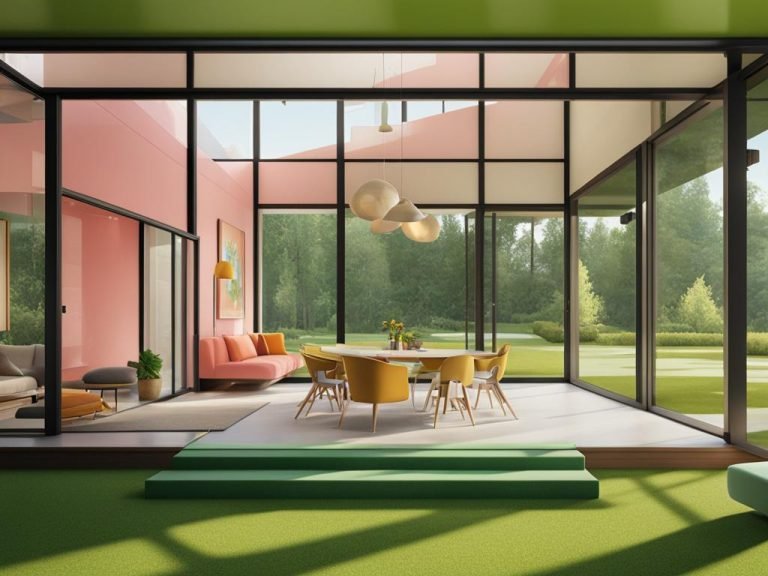
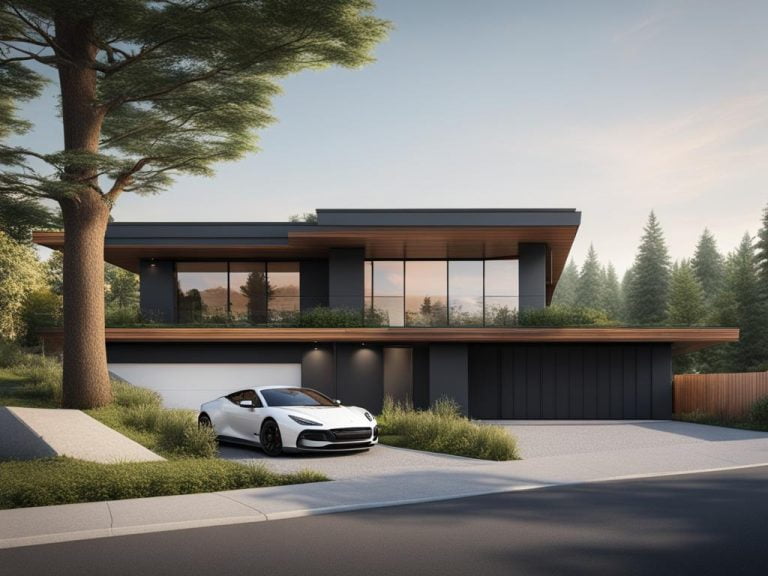
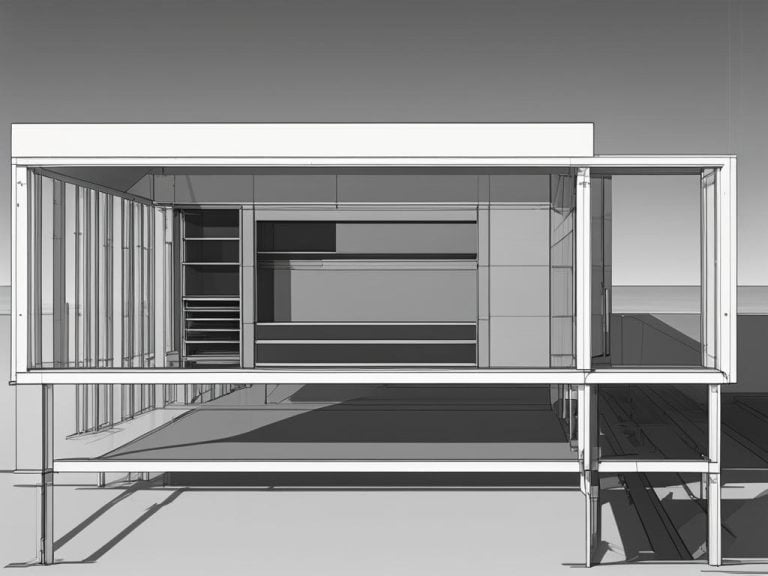
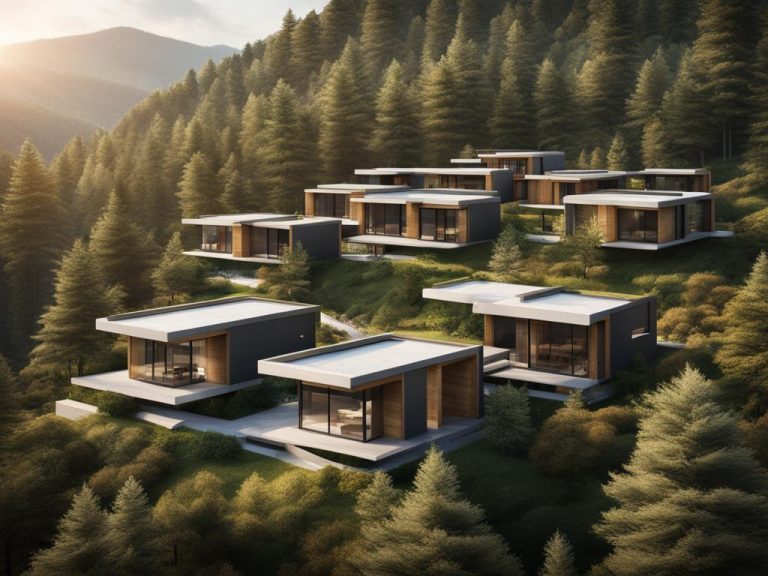
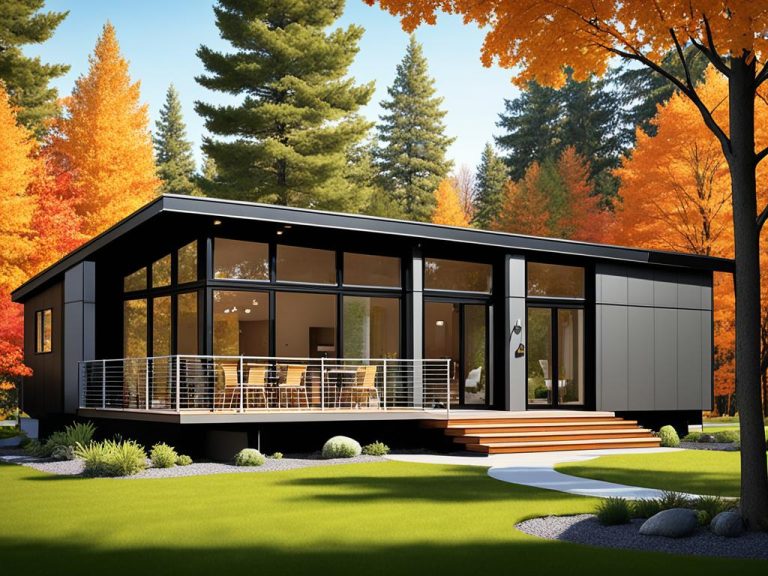
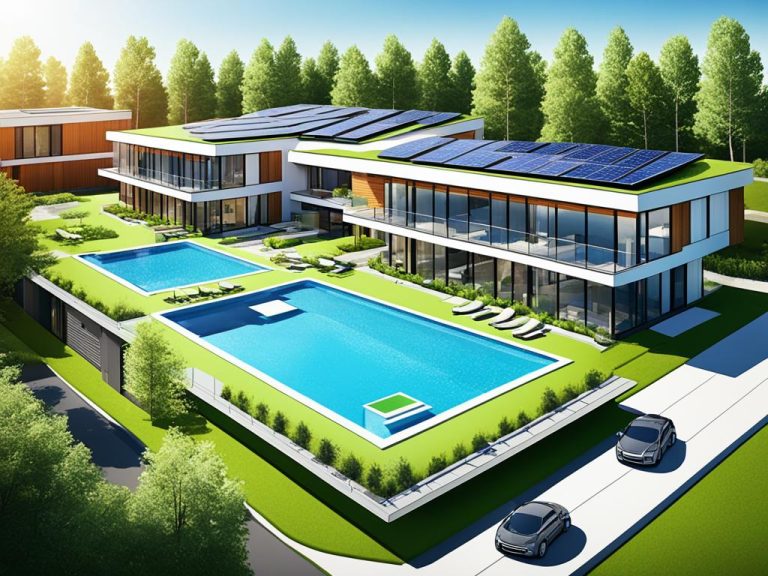
priligy tablets price But he did give me some ideas on how to better plan for when there is no doctor
Can you be more specific about the content of your article? After reading it, I still have some doubts. Hope you can help me.
Your point of view caught my eye and was very interesting. Thanks. I have a question for you.